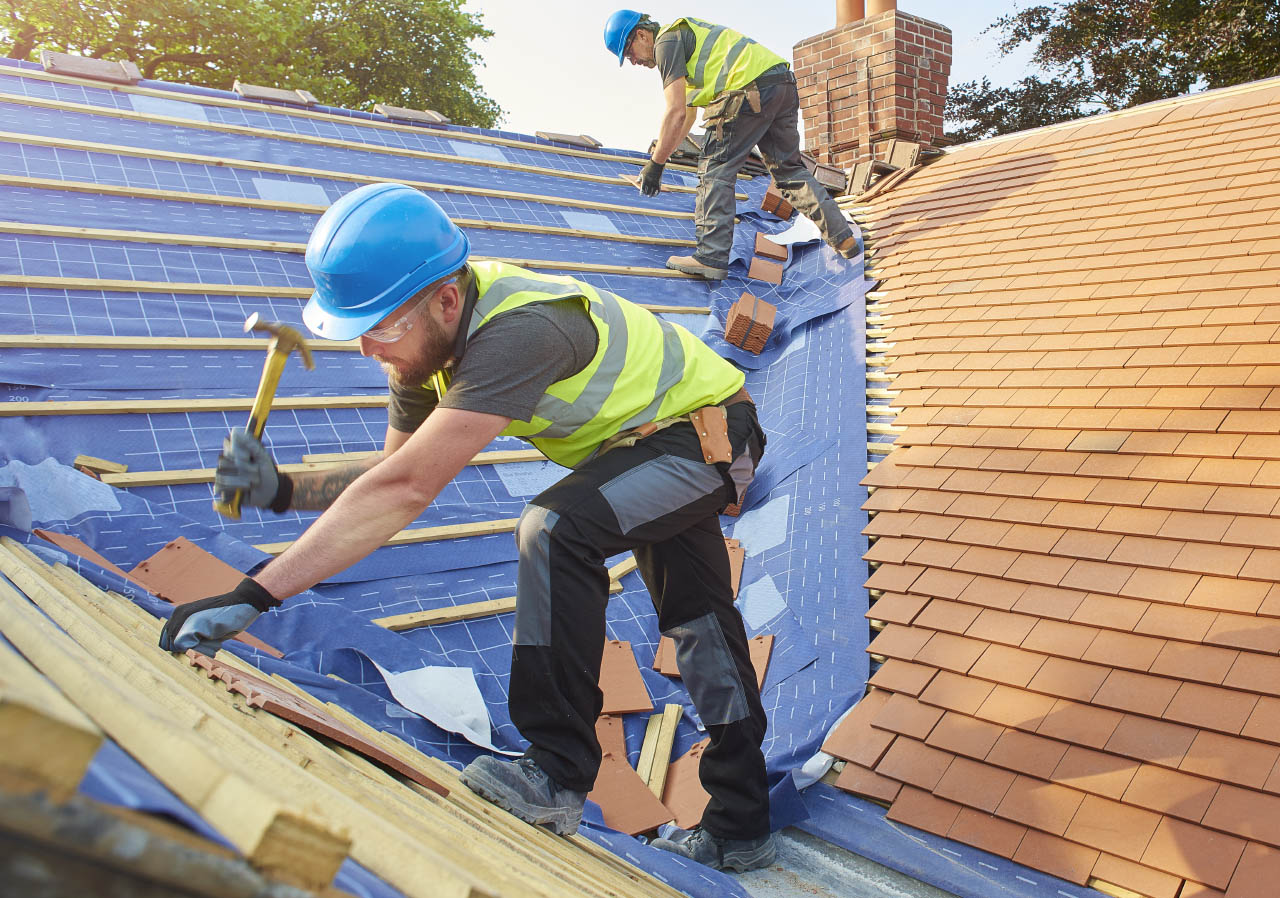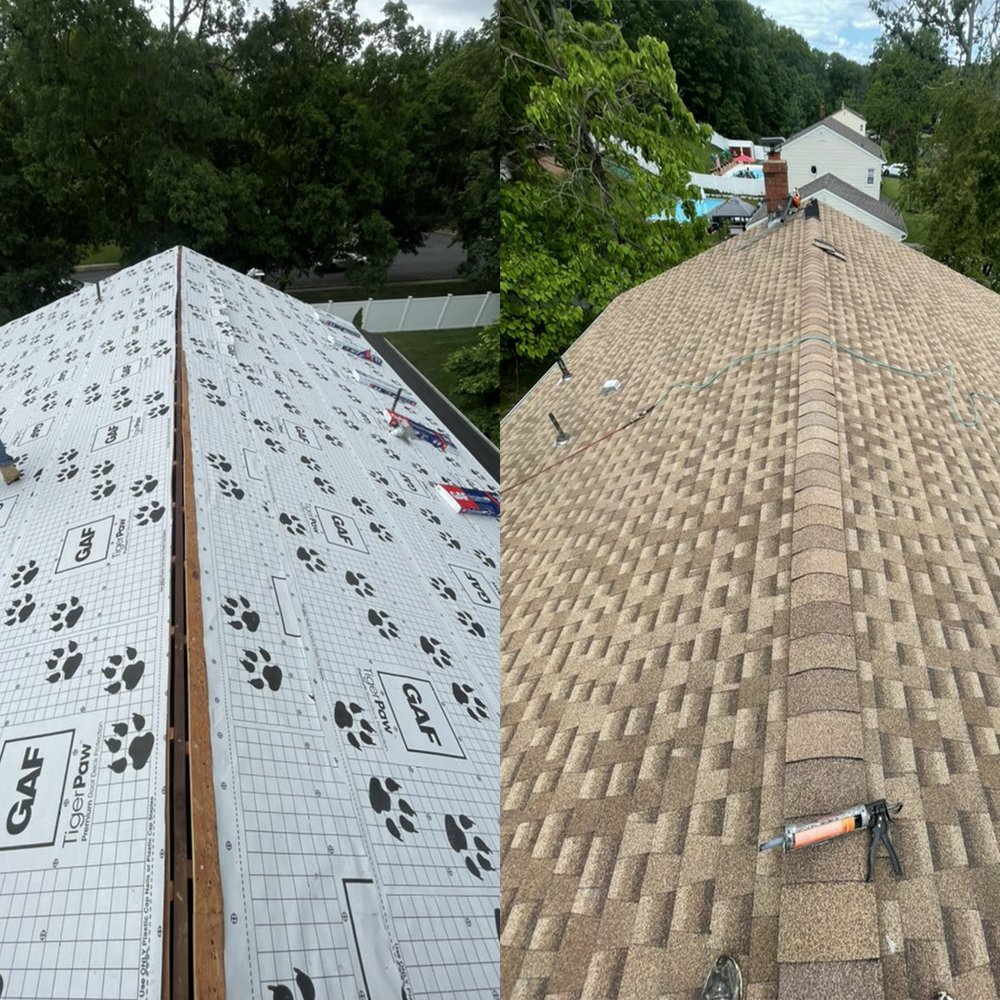Roofing Oahu: Professional Professional Roofer for Your Oahu Residential property
Roofing Oahu: Professional Professional Roofer for Your Oahu Residential property
Blog Article
Understanding the Various Kinds Of Roofs: A Comprehensive Guide for Homeowners
With a selection of choices-- ranging from the standard gable to the contemporary flat-- each kind offers unique advantages and obstacles that should straighten with the property owner's details demands and environmental considerations. As we explore the intricacies of different roofing types, it ends up being apparent that one dimension does not fit all; the appropriate option may surprise you.
Gable Roof Coverings
Saddleback roofs, identified by their triangular form, are among the most preferred roof covering designs because of their simpleness and effectiveness in shedding water and snow. This layout includes 2 sloping sides that meet at a ridge, enabling reliable drain and minimizing the risk of water build-up. The high pitch commonly associated with saddleback roofs enhances their capacity to manage heavy rainfall, making them suitable for numerous environments.
In addition to their practical advantages, saddleback roofs provide aesthetic adaptability. They can be adjusted to numerous building designs, from conventional to modern-day homes. The layout can additionally fit extra attributes such as dormer home windows, which improve natural light and air flow in the attic room area.
Moreover, saddleback roofs offer enough room for insulation, contributing to energy efficiency. Homeowners can pick from a selection of roof products, consisting of asphalt shingles, metal, and tiles, further improving modification options.
In spite of their advantages, gable roofings may require added support in locations susceptible to high winds or hefty snowfall. Overall, the saddleback roof remains a popular selection because of its blend of functionality, resilience, and visual appeal.
Flat Roofs
Flat roof coverings are often identified for their minimal style and functional applications, specifically in business and industrial settings (oahu roofing). These roofing systems feature a almost horizontal or straight surface area, which enables very easy building and versatile area use. While they might lack the aesthetic allure of angled roofs, level roof coverings supply countless advantages, especially in urban settings where taking full advantage of room is crucial
One of the primary benefits of level roofings is their availability. Property owners can utilize the roofing system area for numerous functions, such as rooftop gardens, terraces, or photovoltaic panel setups. In addition, level roof coverings are usually much more affordable to install and preserve compared to their sloped counterparts, as they require less materials and labor.
Typical products used for level roof coverings include built-up roofing (BUR), changed bitumen, and single-ply membranes, each offering distinct benefits. Overall, flat roofs serve as a versatile and useful selection for lots of home owners and organizations alike.
Hip Roof Coverings
Hip roof coverings are identified by their sloped sides that assemble at the top, forming a ridge. This design is distinctive from saddleback roofs, as all 4 sides of a hip roof covering incline downwards toward the walls, providing an extra steady structure. The angle of the slopes can differ, permitting adaptability in architectural looks and performance.
One of the key benefits of hip roofing systems is their capacity to stand up to heavy winds and adverse weather. The sloped surfaces make it possible for much better water drain, minimizing the danger of leakages and water damage. Additionally, hip roofings provide raised attic room space, which can be made use of for storage or perhaps exchanged habitable locations.
Nevertheless, creating a hip roofing can be more intricate and costly than less complex roof covering types, such as saddleback roofs. The extra product and labor associated with developing the slopes and making sure appropriate architectural honesty can result in higher costs. Regardless of these disadvantages, several property owners prefer hip roofing systems for their longevity, aesthetic charm, and possibility for energy effectiveness.
Mansard Roof Coverings
Mansard roofing systems, commonly recognized by their distinct four-sided style, attribute two slopes on each side, with the lower incline being steeper than the top. This building style, originating from France in the 17th century, is not only cosmetically enticing but functional, as it maximizes the functional area in the top floorings of a building. The steep lower slope enables for even more clearance, making it a perfect option for attic rooms or lofts, which can be transformed right into living spaces.
Mansard roof coverings are identified by their flexibility, fitting numerous building designs, from typical to modern-day. They can be constructed with various products, consisting of asphalt tiles, slate, or metal, offering property owners with a series of alternatives to match their budget plans and choices. Furthermore, the style allows for the integration of dormer windows, boosting all-natural light and air flow in the top degrees.
Nevertheless, it is necessary to think about the prospective drawbacks. Mansard roofs might need even more maintenance due to the complexity of their style, and their steep slopes can be challenging for snow try here and rain overflow. In general, mansard roofing systems integrate beauty with practicality, making them a preferred option among homeowners looking for unique architectural attributes.
Dropped Roofing Systems
As house owners progressively seek simpleness and performance in their architectural styles, shed roof coverings have become a preferred choice. Identified by a single sloping plane, a shed roofing presents a minimal aesthetic that enhances different home designs, from contemporary to rustic.
Among the primary benefits of a shed roof is its simple building and construction, which typically converts to lower labor and material prices. This layout permits effective water drain, reducing the danger of leakages and water damage. Furthermore, the vertical go to these guys incline supplies enough area for skylights, boosting natural light within the interior.
Dropped roofs also use convenience in terms of usage. They can be successfully incorporated into enhancements, garages, or exterior frameworks like structures and sheds. In addition, this roof style can accommodate various roofing materials, consisting of metal, asphalt shingles, or perhaps eco-friendly roofs, aligning with green initiatives.
Nonetheless, it is important to think about regional climate problems, as hefty snow lots might require modifications to the roofing system's angle or structure. In general, shed roofs offer a sensible and cosmetically pleasing choice for house owners seeking to maximize capability without endangering style.
Conclusion


Gable roofings, characterized by their triangular shape, are amongst the most preferred roofing designs due to their simpleness and effectiveness in shedding water and snow. oahu roofing. The steep pitch frequently linked with gable roofing systems improves their capacity to Get More Info take care of heavy rainfall, making them suitable for numerous environments
While they might lack the aesthetic appeal of pitched roofs, flat roofs offer various advantages, particularly in city settings where maximizing space is critical.

Report this page